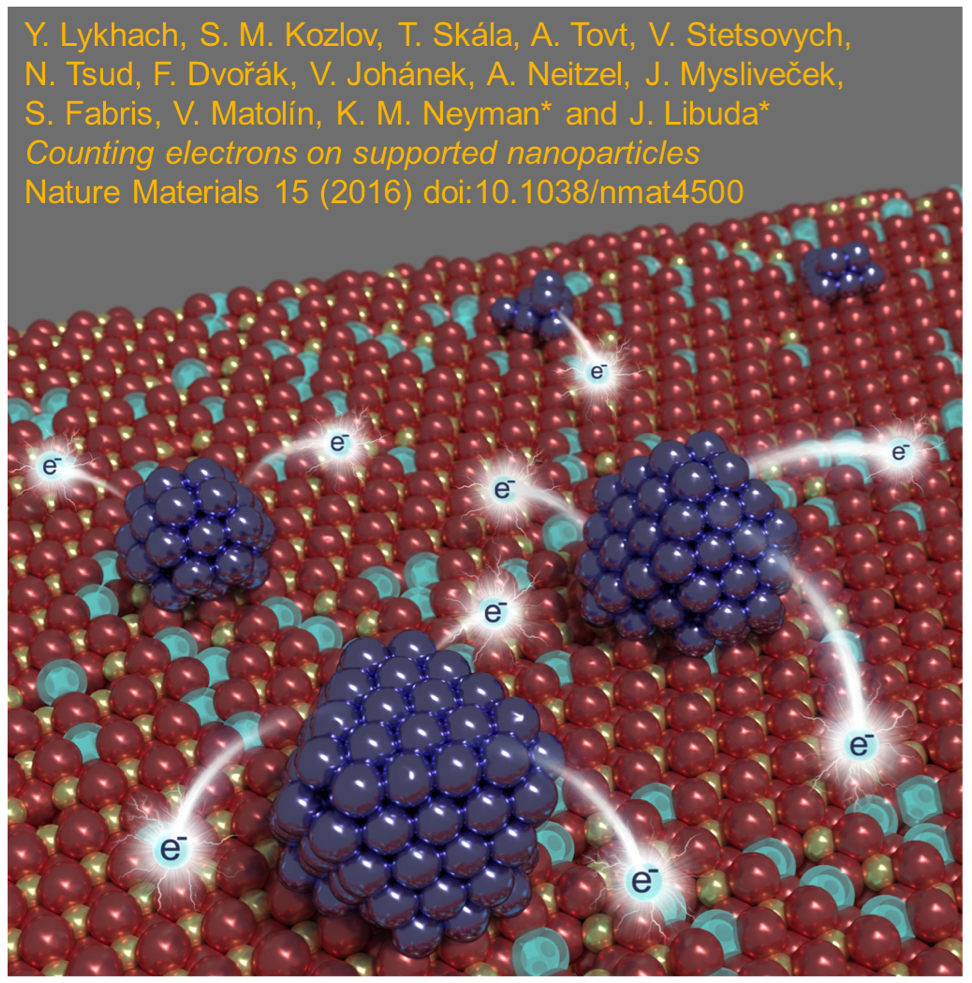‘Counting electrons on supported nanoparticles’ published at Nature Materials
How nanoparticles give electrons away?
Researchers gain new insights into the electrical charge of platinum particles§
Whethe r it is in catalytic processes, new types of solar cells or advanced electronic components, nanoparticles are everywhere in modern production and environmental technologies. Their unique properties ensure efficiency and save resources. Remarkable properties of nanoparticles often arise from chemical interactions with the support material on which they are placed. Such interactions change the electronic structure of the nanoparticle when electrical charge is exchanged between the particle and the support. Working groups led by scientists from University of Barcelona (UB) and Friedrich-Alexander-Universität Erlangen-Nürnberg (FAU) have now succeeded in quantifying the charge that is lost by a platinum nanoparticle when it is deposited onto a typical oxide support. Their work brings the possibility of designing nanoparticles with tailor-made properties a step closer.
r it is in catalytic processes, new types of solar cells or advanced electronic components, nanoparticles are everywhere in modern production and environmental technologies. Their unique properties ensure efficiency and save resources. Remarkable properties of nanoparticles often arise from chemical interactions with the support material on which they are placed. Such interactions change the electronic structure of the nanoparticle when electrical charge is exchanged between the particle and the support. Working groups led by scientists from University of Barcelona (UB) and Friedrich-Alexander-Universität Erlangen-Nürnberg (FAU) have now succeeded in quantifying the charge that is lost by a platinum nanoparticle when it is deposited onto a typical oxide support. Their work brings the possibility of designing nanoparticles with tailor-made properties a step closer.
One of the main questions that nanoscience researchers have been discussing for long time is how nanoparticles interact with the support that they are placed on. It is now clear that various physical and chemical factors such as the electronic structure, the nanostructure and – crucially – their interaction with the support control the properties of nanoparticles. Although this interaction – specifically the transfer of electrical charge – has already been observed to a great extent, previous studies have not investigated how much charge is transferred and whether there is a relationship between the transfer and the size of the nanoparticle.
In order to measure the electrical charge that is exchanged the international team of researchers from Spain, Germany, Italy and Czech Republic funded by the European Commission and led by Profesor Dr. Jörg Libuda (FAU) and ICREA Professor Dr. Konstantin Neyman (UB), prepared a clean and atomically well-defined oxide surface, on which they placed platinum nanoparticles. Using a highly sensitive detection method at Elettra Sincrotrone Trieste the researchers were able to quantify the effect for the first time. Studying particles with various numbers of atoms, from dozens to many hundred, they measured the number of electrons transferred and showed that the effect is most pronounced for small particles with around 50 atoms. The effect for such particles is surprisingly large: approximately every tenth metal atom loses an electron when the particle is in contact with the oxide. Using theoretical methods and computational modelling the researchers were able to show how the effect can be controlled, allowing the chemical properties to be adapted to better suit their intended application. This new insight should enable more efficient usage of valuable raw materials and energy, for instance, in catalytic processes.
§ Y. Lykhach, S. M. Kozlov, T. Skála, A. Tovt, V. Stetsovych, N. Tsud, F. Dvořák, V. Johánek, A. Neitzel, J. Mysliveček, S. Fabris, V. Matolín, K. M. Neyman*, J. Libuda*. Counting electrons on supported nanoparticles. Nature Materials 15 (2016), doi: 10.1038/nmat4500
